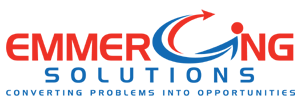Operational planning is a way to take your company’s high-level vision and create a detailed and meticulous plan for execution. An operational plan is a detailed functioning plan with more fidelity that is designed to be the basis for your company’s strategy in terms of a project (or the whole organization) for a small period (usually between one and five years). The timeline for the operational plan is determined by the goals and expected return on investments.
These plans go by various names, including project plans, annual plans, business plans, and others, but no matter what name is given, the fundamentals are the same. The operational plan may consider other aspects of the business, such as inventory operations, supply chain management, and business process integration. Operational plans can help create a clear path for your employees and even help get the necessary funding. But the real substance of an operational plan is derived from the creation of the plan. How do you create the plan in the first place?
Designing the Plan
Because operational planning is the foundation for your company’s actions for a targeted amount of time, it must be done right. Therefore, the design stage is essential, and as such, it includes several important steps.
- Choose a Path: When choosing the direction of your operational plan, you should be sure that it will work towards your company’s overall strategy. The goals and daily operational tasks must be aligned and cross-checked for synergy across business threads.
- Plan the Influence: You must determine what you expect to achieve with the plan, specifically how it will impact various areas of your organization., i.e., Inventory operations, Supply chain management, and business process integration.
- Identify Goals: Once you have determined the impact, you should use that as a basis for setting up the goals and a plan for achieving them. Be sure that your goals are SMART – S: specific, M: measurable, A: achievable, R: realistic, and T: timed.
Writing the Plan
Once you have goals and ideas of how to achieve them, you are ready to use this information to write the plan. This should include a list of actions that will be done as well as a timetable for completing them. Be sure to include the goals, you carefully created during the initial stages of the operational planning, ensuring that they are SMART. A key part of writing out your plan is also describing how it will be evaluated, in order to do this, you should create a structure to determine if it is going as planned.
Make It Agile
When writing your operational plan, be sure that it includes allocated time for revisions when necessary. It is important to remember that no matter how much planning you do, both internal and external factors may affect the timeframe. Because of this, you should include review dates when creating your plan and expect to check the progress as well as the functionality of the plan at each of these dates.
Communicating the Plan
Once you have created the planning, ensuring that it is adaptable and includes all of your goals, it is time to ensure that everyone involved in the project (or company, depending on the scope of your operational planning) is not only aware of it but understands it as well. The proper buy-in and willingness to embrace change should be a stipulation for stakeholders.
There are several key factors when selecting the primary stakeholders. Remember that people from different areas of your organization may be involved and for the operational plan to succeed, everyone must be on the same page. For larger plans that involve the entire company, you can also create slightly different variations that target specific teams with the information most relevant to them. Keep in mind that communicating the plan will require a communication plan.
Inventory Operations
There may be an urgency to balance stock levels, reduce inventory, adjust safety stocks, analyze physical space and review material handling practices. Inventory Operations are the engines that keep the company operating. Emmerging Solutions offers an inventory assessment to optimize inventory and production operations. Below are some of the areas that may be reviewed with the assessment.
- Forecast methods and forecast consumption rules
- Lot sizing calculations
- Analysis of bills-of-materials, routings, and order policies for MRP systems
- Vendor managed inventory/Other Outside Operations
- Transactional methods including back-flushing
- Excess and Obsolete Inventory


Supply Chain Management
Customers’ needs are always changing. The success of your business can come down to how resilient your supply chain management is. The ability to conduct a supply chain assessment affords companies insight for improvements. With an optimized transportation network and supply chain, you will be better equipped to speed products to market, drive growth, and focus on what matters most — your customers.
The management of the flow of goods and services involves the movement and storage of raw materials, work-in-process inventory, finished goods, and end-to-end order fulfillment from the point of origin to consumption. When companies focus on their supply chain management, the strategic sourcing and supply chain network are reviewed for leverage. Emmerging Solutions is equipped to review the supply chain flow to maximize quality, delivery, customer experience, and profitability.
Business Process Integration
Emmerging Solutions integrates our teams into the threads of our client’s enterprise to deliver flexible and effective multifaceted process and technology integration. In order to achieve automation, business process and technology integration are leading factors that must be aligned. Every business is under pressure to automate manual processes, better integrate internal systems and securely share data with external parties. Business Process Integration breaks down barriers between internal and external systems.
Technology has changed the way we do business. Effective technology integration is achieved when its use supports curricular goals. Integration is an instructional choice that generally includes collaboration and deliberate planning. Business process and technology integration provide a framework to ensure the proper alignments are in place for any necessary business or technology enhancements. Emmerging Solutions will work with you to ensure your business is appropriately integrated with the fluctuating economy. In order to ensure business process integration, we analyze the current key performance indicators.

